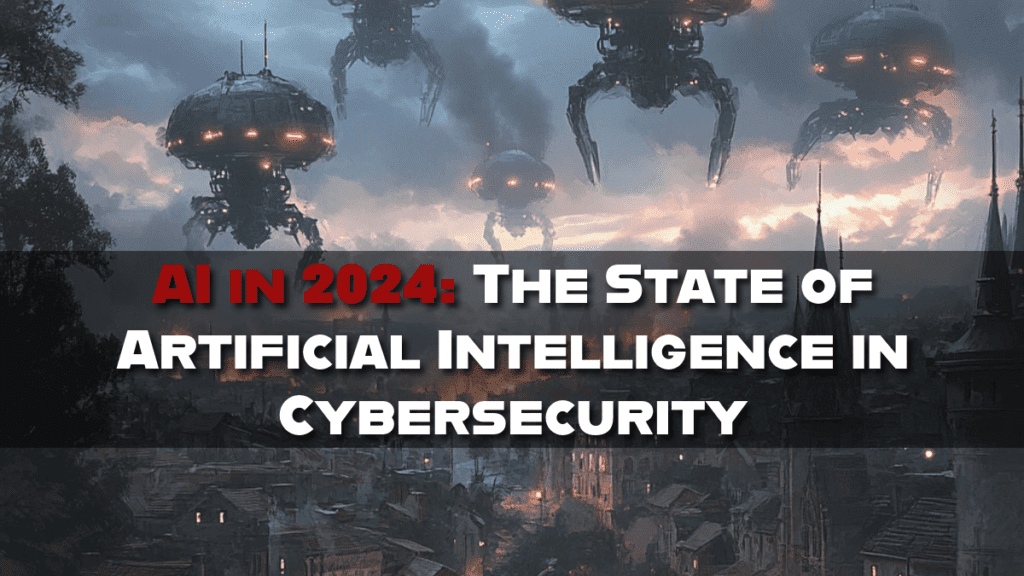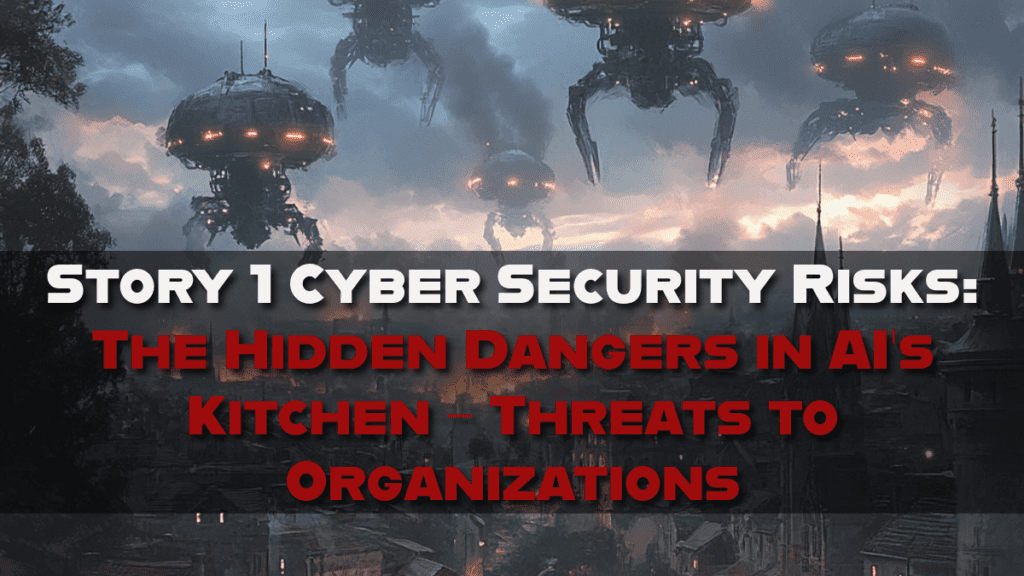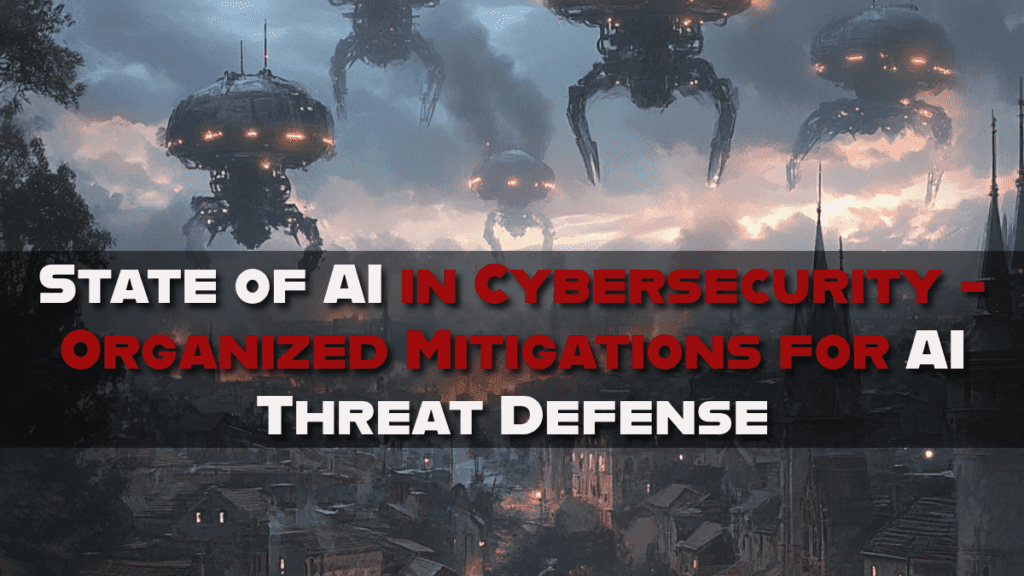The Artificial Intelligence (AI) Frontier Under Siege
Picture a sprawling frontier town in the digital Wild West—your organization. It’s buzzing with the promise of artificial intelligence, a gleaming new tool forging paths to innovation. AI’s cooking up breakthroughs in the town’s kitchen, but shadowy figures lurk at the edges: hackers like Alex, armed with AI tricks to rob you blind; 2024’s breaches, scars on the town’s history showing how real the danger is; a storm of risks brewing for 2025; and a criminal gold rush, where scammers turn AI into their treasure map.

The townsfolk—your employees, systems, and data—are counting on you to protect them. The stakes are high: poisoned data could ruin your harvest, deepfake bandits could loot your vaults, and unchecked vulnerabilities could let the whole town burn. But you’re not defenseless. With a strategic mix of vigilance, tech, and grit—like a sheriff with a posse of smart tools—you can turn this frontier into a fortress. Here’s how to face the threats head-on and keep your town standing tall.

Story 1 Cyber Security Risks: The Hidden Dangers in AI’s Kitchen – Threats to Organizations
AI Based Security Risks:
- Data Poisoning: Manipulating training data continues to threaten sectors like healthcare and finance, with new reports highlighting its use in undermining generative AI (GenAI) models.
- Model Inversion and Extraction: Attackers extract sensitive data or replicate proprietary models, with LLMJacking incidents showing stolen cloud credentials being used to query large language models (LLMs) illicitly.
- Adversarial Attacks and Prompt Injection: Subtle input changes or malicious prompts bypass controls, with examples like the ChatGPT macOS app vulnerability enabling spyware (SpAIware) via indirect prompt injection.
- API and Infrastructure Exploits: Poorly secured APIs and cloud-based AI services are prime targets, with hard-coded API keys in devices like the Rabbit R1 exposing customer data.
- Shadow Data and Models: Untracked data and models in GenAI initiatives risk breaches, compounded by employees sharing sensitive information with platforms like ChatGPT or Google’s Gemini.

Story 2 Cyber Threats: Alex the Hacker – How Criminals Are Supercharging Scams with AI
1. Supplement Industry, Products, and Brands
- Current Scams: Fake endorsements, counterfeit products, and misleading health claims proliferate online, often using AI-generated reviews or influencer content.
- AI Evolution in 2025:
- Deepfake Endorsements: AI could create convincing video testimonials from fabricated doctors or celebrities, targeting niche supplement brands to boost credibility and sales.
- Personalized Phishing: GenAI could craft tailored email campaigns offering “exclusive” supplements based on scraped health data, tricking consumers into fraudulent purchases or subscriptions.
- Supply Chain Attacks: AI-driven reconnaissance could identify vulnerabilities in supplement manufacturers’ third-party vendors, enabling counterfeit product infiltration.
2. Information Products
- Current Scams: Bogus online courses, eBooks, and coaching services use AI-generated content to appear legitimate, often sold via social media ads.
- AI Evolution in 2025:
- Synthetic Expertise: GenAI could produce highly polished, multilingual disinformation products (e.g., fake investment guides), targeting vulnerable demographics with adaptive pricing scams.
- Automated Sales Funnels: AI agents could manage end-to-end scams—generating content, running ads, and handling customer interactions—scaling operations with minimal human effort.
- Social Engineering: Enhanced phishing lures, powered by LLMs, could impersonate trusted educators or platforms, tricking users into sharing payment or personal data.
3. Ransomware
- Current State: Ransomware remains a top threat, with AI automating payload delivery and evasion tactics.
- AI Evolution in 2025:
- Adaptive Ransomware: AI-driven malware could analyze victim systems in real-time, customizing encryption strategies to maximize damage and ransom demands.
- Deepfake Extortion: Criminals could pair ransomware with deepfake videos of executives admitting fabricated crimes, increasing pressure to pay.
- Cloud Targeting: LLMJacking trends suggest ransomware could lock AI models or cloud-based datasets, demanding payment for restored access.
4. Zero-Days
- Current State: Zero-day exploits targeting AI infrastructure are emerging, with an ineffective GenAI-developed exploit for CVE-2024-3400 showing potential.
- AI Evolution in 2025:
- AI-Generated Exploits: Nation-states (e.g., Iran, China) could use LLMs to rapidly identify and weaponize zero-days in AI systems, outpacing traditional patch cycles.
- Automation Surge: AI agents could scan for zero-days across cloud ecosystems, selling access on dark web forums to less skilled actors.
- GenAI Vulnerabilities: Prompt injection and model-specific zero-days could become widespread, targeting unpatched APIs or misconfigured LLMs.
5. Automation and AI Agents
- Current State: Automation enhances attack scale, with AI agents handling reconnaissance, phishing, and malware deployment.
- AI Evolution in 2025:
- Autonomous Campaigns: AI agents could orchestrate multi-stage attacks—e.g., identifying targets, crafting lures, and exfiltrating data—without human oversight.
- Dark Web Accessibility: Open-source LLMs without guardrails could empower low-skill actors to deploy automated scams, from fake product sales to influence operations.
- Real-Time Adaptation: AI agents could adjust tactics mid-attack, evading detection by learning from security responses.

Story 3 AI Security: The AI Breaches of 2024 – Real-World Wake-Up Calls
- ChatGPT macOS Vulnerability: A flaw allowed spyware implantation via prompt injection, enabling persistent data theft until OpenAI patched it.
- Green Cicada Influence Operation: Over 5,000 fake X accounts, likely powered by a Chinese LLM, amplified divisive narratives before the 2024 U.S. election.
- LLMJacking Attacks: Q2 and Q4 saw threat actors compromise cloud environments to access restricted AI models, aiming to resell or misuse them.
- GlobalProtect Exploit Attempt: An unattributed actor used GenAI to craft an exploit for CVE-2024-3400, signaling AI’s role in vulnerability research.
- Rabbit R1 API Flaw: Hard-coded keys exposed sensitive customer data, underscoring third-party risks.

Story 4 Cybersecurity Risks: The Storm on the Horizon – Greatest Risks for 2025
AI Threat Landscape
- Enhanced Social Engineering: GenAI will refine phishing lures and deepfake scams, making them harder to detect across industries like supplements and information products.
- Third-Party and Supply Chain Attacks: Increased reliance on cloud providers and AI vendors will expose organizations to LLMJacking and backdoor risks.
- Zero-Day Surge: AI-driven exploit development will accelerate, targeting GenAI models, APIs, and cloud infrastructure.
- AI-Powered Cybercrime Ecosystem: Dark web forums will proliferate with unrestricted LLMs, enabling scams, ransomware, and automation at scale.
- Regulatory Pressure: Stricter AI security laws will emerge, but compliance gaps could leave organizations vulnerable.
- Offensive AI Adoption: Nation-states, eCrime actors, and hacktivists will fully integrate GenAI, amplifying disinformation, fraud, and network attacks.

Story 5: The Criminal Gold Rush – AI’s Role in Money-Making Schemes
Artificial Intelligence (AI) Threats in 2025
- Fraud Growth: Over 92,000 deepfake fraud cases in India in 2024 and forecasts of $40 billion in losses by 2027 (Deloitte) underscore AI’s role in scams.
- Scalability: Automation and AI agents enable criminals to target millions with personalized attacks, from fake products to ransomware.
- Accessibility: Dark web LLMs lower the entry barrier, with eCrime actors monetizing tools for scams in supplements, brands, and beyond.
- Real-World Evidence: LLMJacking and influence operations like Green Cicada show AI’s profitability for criminals.
Wrapping It Up: The AI Arms Race
- Widespread Deception: AI-enhanced scams in supplements, products, and information will exploit trust, draining finances and eroding brand integrity.
- Critical System Failures: Ransomware and zero-day attacks on AI infrastructure could disrupt healthcare, finance, and supply chains.
- Data Exposure: Third-party vulnerabilities and employee misuse of GenAI will fuel breaches, compromising sensitive information.
- Regulatory Lag: Slow compliance with new laws could leave gaps for attackers to exploit.

State of AI in Cybersecurity – Organized Mitigations for AI Threat Defense
1. Risk Management and Compliance
- Risk Assessment: Conduct a formal security assessment of Generative AI (GenAI) to weigh benefits against threats.
- Rule Abiding: Comply with evolving AI security regulations to avoid penalties and bolster defenses.
- Future-Proofing: Prepare for post-quantum cryptography to protect against future threats.
2. Access Control and Identity Management
- Gatekeepers: Implement robust Identity and Access Management (IAM) to restrict AI infrastructure access.
- Locked Vaults: Strengthen access controls to block tampering with AI systems.
- No Assumptions: Adopt a Zero Trust model, verifying all users and devices.
- Step-by-Step Verification: Enforce a zero-trust architecture with continuous verification.
- Key Rotation: Rotate compromised credentials quickly to stop lateral movement.
- Secure Keys: Ensure service accounts aren’t overprivileged and use strong password policies.
3. Monitoring and Threat Detection
- Vigilant Watch: Monitor GenAI inputs and outputs to detect prompt injections and data leaks.
- Constant Surveillance: Rigorously monitor for anomalous AI usage patterns.
- Proactive Hunters: Use AI-driven threat hunting to spot stealthy adversaries.
- Early Warnings: Set detection rules to flag unauthorized tool use and conduct frequent threat hunting.
4. Cloud and Infrastructure Security
Description: Secure cloud environments and infrastructure, key targets for AI-related attacks.
- Cloud Defenses: Harden cloud setups by fixing misconfigurations and protecting credentials.
- Know Your Terrain: Maintain an inventory of public-facing software and enforce strict access controls.
- Full Coverage: Ensure comprehensive logging and endpoint security for full visibility.
- Modern Walls: Adopt cloud-native security solutions for AI deployments.
5. AI Security Solutions
- AI Guardians: Deploy AI security tools to counter data poisoning, model evasion, and extraction.
- Automation Allies: Leverage AI to automate security tasks, boosting efficiency.
6. Training and User Awareness
- Educated Defenders: Train employees, especially data scientists, on risks of sharing sensitive data with AI.
- Alert Workforce: Teach staff to identify and report suspicious AI interactions.
7. Email Security
- Mail Filters: Configure email servers to block phishing with robust authentication.
- Advanced Filters: Use advanced filtering to catch sophisticated AI-driven email attacks.
8. Threat Intelligence
- Intelligence Network: Use threat feeds (e.g., ZeroFox) to track emerging threats.
- Dark Web Patrols: Monitor criminal markets for signs of your data or AI tools being sold.
- Lessons from the Past: Analyze past AI attacks to refine monitoring and defenses.
9. Incident Response and Recovery
- Battle Ready: Develop and practice incident response plans for AI threats.
- Bounce Back: Build resilience with segregated operations and updated recovery plans.
10. Proactive Security Measures
- Preemptive Strikes: Conduct vulnerability assessments and patch proactively.
- Wall Repairs: Regularly patch and upgrade critical, internet-facing systems.
- Trusted Builders: Choose vendors with low vulnerabilities and fast patch releases.
11. API Security
- API Shields: Prioritize API security to block breaches at these vulnerable interfaces.






